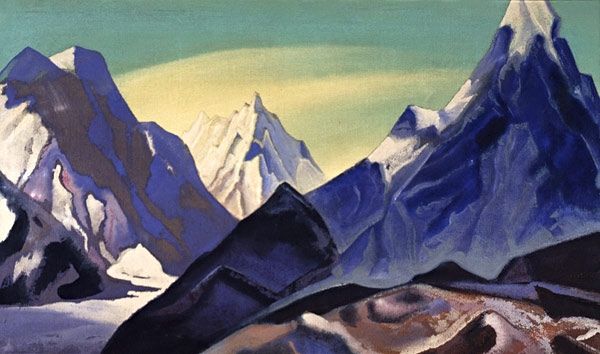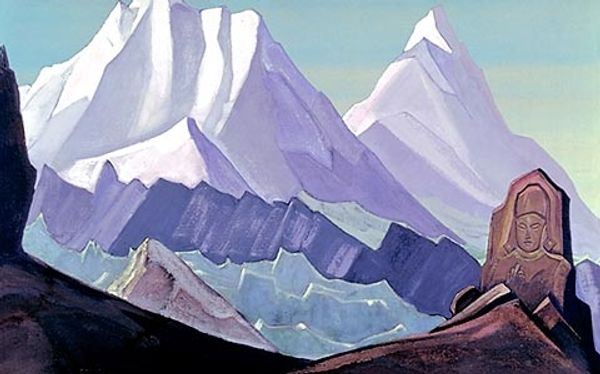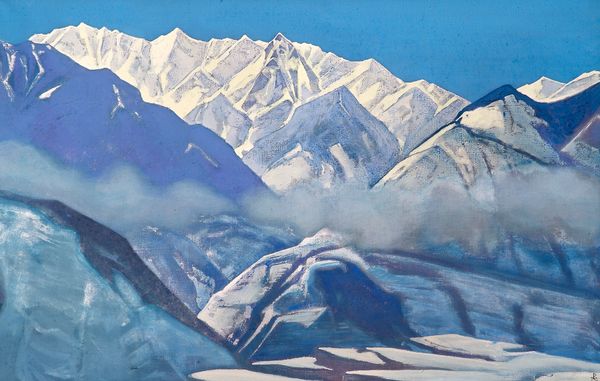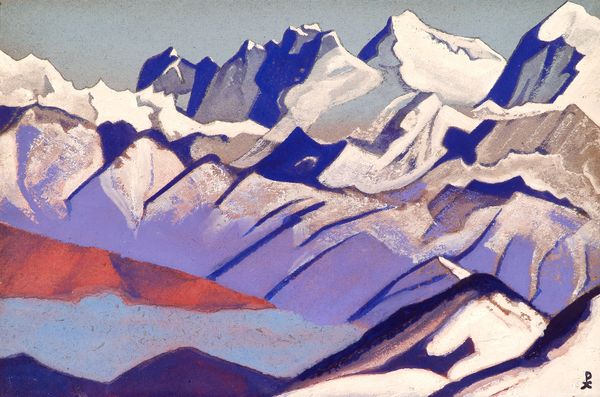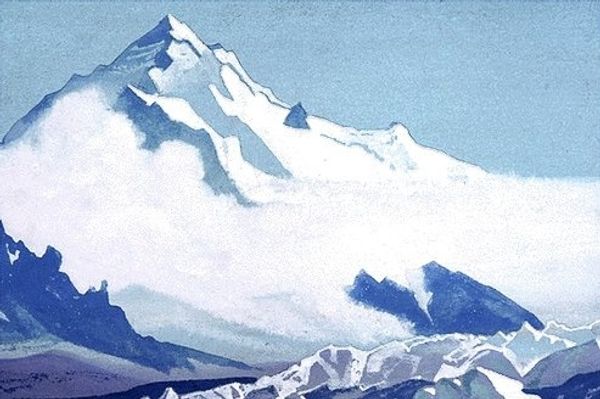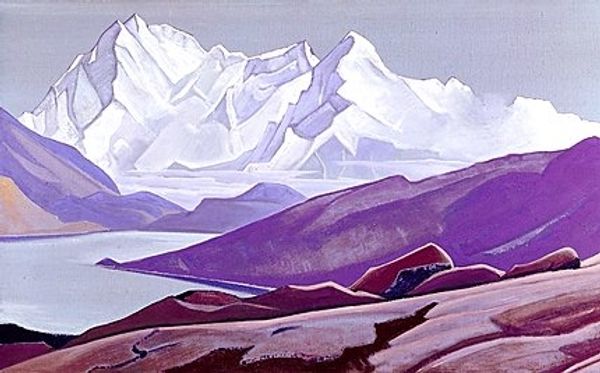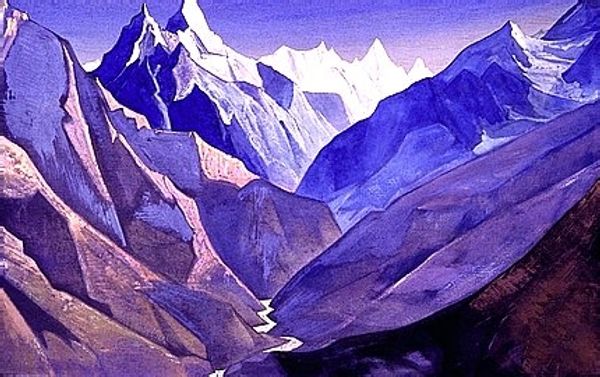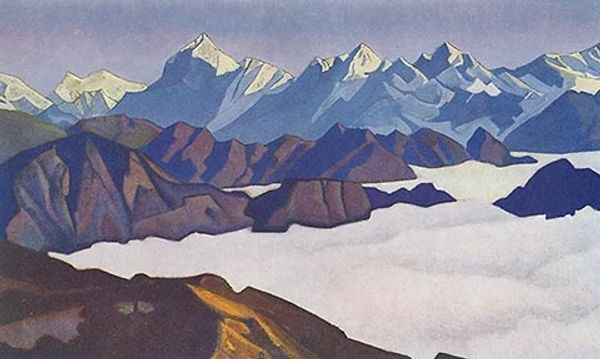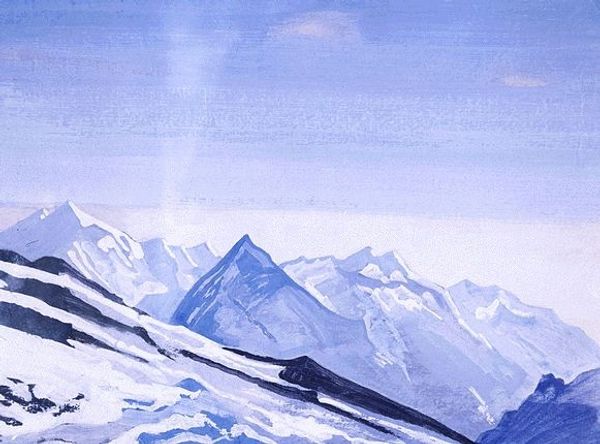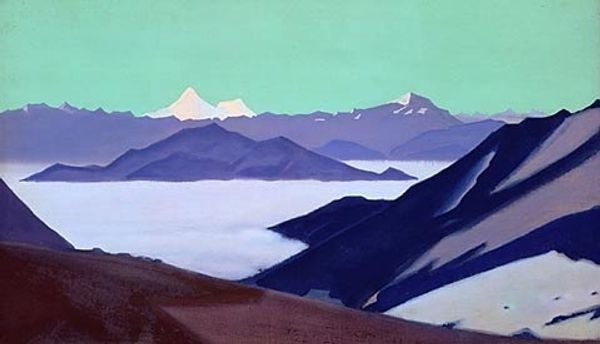
Copyright: Public domain
Nicholas Roerich painted Kuluta with tempera sometime in the early-mid 20th century, using a pared down palette that echoes the cool tones of the mountain range depicted. It’s so architectural! The geometry of the peaks has this incredible sharpness, each plane of colour next to the other, and the shadows are like facets of a crystal. There's this interplay between the solid forms of the mountains and the ephemeral nature of light and shadow. I keep getting drawn to the lower left, where Roerich used horizontal strokes to depict a kind of frozen lake, or river. They almost vibrate with a subtle energy, contrasting with the more static, vertical thrust of the mountains. It's like he's capturing a moment of transformation, where the solid ground meets the fluidity of water. You can see parallels with someone like Lawren Harris, who was also painting landscapes with a kind of spiritual intensity at this time. Both artists were interested in how the landscape can reflect inner states of consciousness. I think it’s interesting how they both chose the landscape as a vehicle for exploring these bigger questions.
Comments
No comments
Be the first to comment and join the conversation on the ultimate creative platform.
